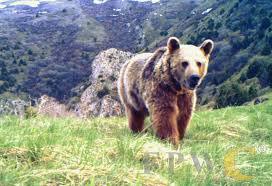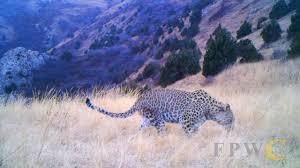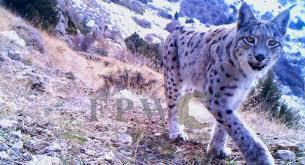
Syrian Brown Bear
The Syrian Brown Bear is a subspecies of Brown Bear native to Eurasia and is one of the largest living carnivores. They live in the south-eastern part of Armenia, mainly in Meghri, Kapan, Goris, Sisian, Vayk, and Yeghegnadzor regions – ranging as far as the hill foots of Mt. Aragtas, and up to elevations of 3,000 meters above sea level.
Although their exact population is unknown, there are thought to be some 150 Syrian Brown Bears in the wild. Poaching and habitat destruction from mining and quarrying are the main reasons for the decline in their numbers

Caucasian Leopard
The Caucasian Leopard is one of the biggest of the eight recognized sub-species of leopard and is listed as “endangered” in the IUCN Red List of Threatened Species. There are currently fewer than 15 Caucasian Leopards present in Armenia. Their population has been devastated due to uncontrolled hunting of them as well as their prey, which include the Bezoar Goat and the Armenian Mouflon.
Footprints of the Caucasian Leopard were discovered in the CWR in 2012. In 2013, FPWC’s trap cameras recorded only the tail of the leopard, and more cameras were set up. Later, a video taken in daylight provided striking images of the leopard.

Caucasian Lynx
Native to Armenia, the Caucasian Lynx can be found in the Ararat, Tavush, Lori, Kotayq, Syunik and Geharqunik regions of the country. As the largest predator in Europe after the Brown Bear and Grey wolf, the Caucasian Lynx is capable of killing prey 3-4 times its size and consumes up to 2 kilograms of meat a day.
In the recent decades, these animals are rarely seen as their numbers have dramatically decreased due to illegal skin trade, habitat loss, and prey base depletion.

Bezoar Goat
Bezoar Goats, also known as Wild Goats or Bezoar Ibex, have been hunted throughout the Caucasus for decades, and are currently listed as “vulnerable” in the IUCN Red List of Threatened Species. Their highly prized horns, which curve upwards and backwards, have made them a prey for trophy hunters.
In the 1980s, there were approximately 3,500 to 4,000 of them in the Caucasus, but this number has significantly declined since. Bezoar Goats are locally extinct in Jordan and Syria